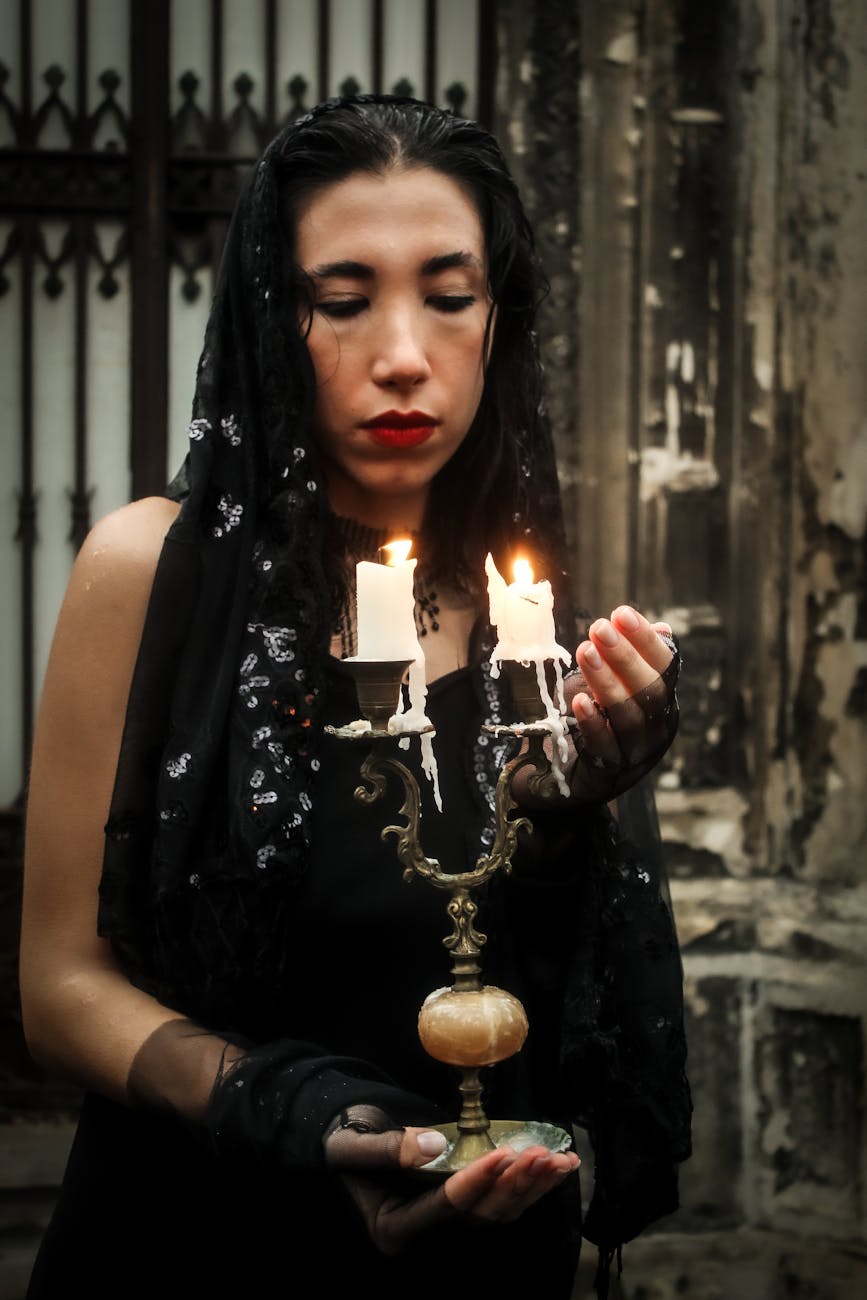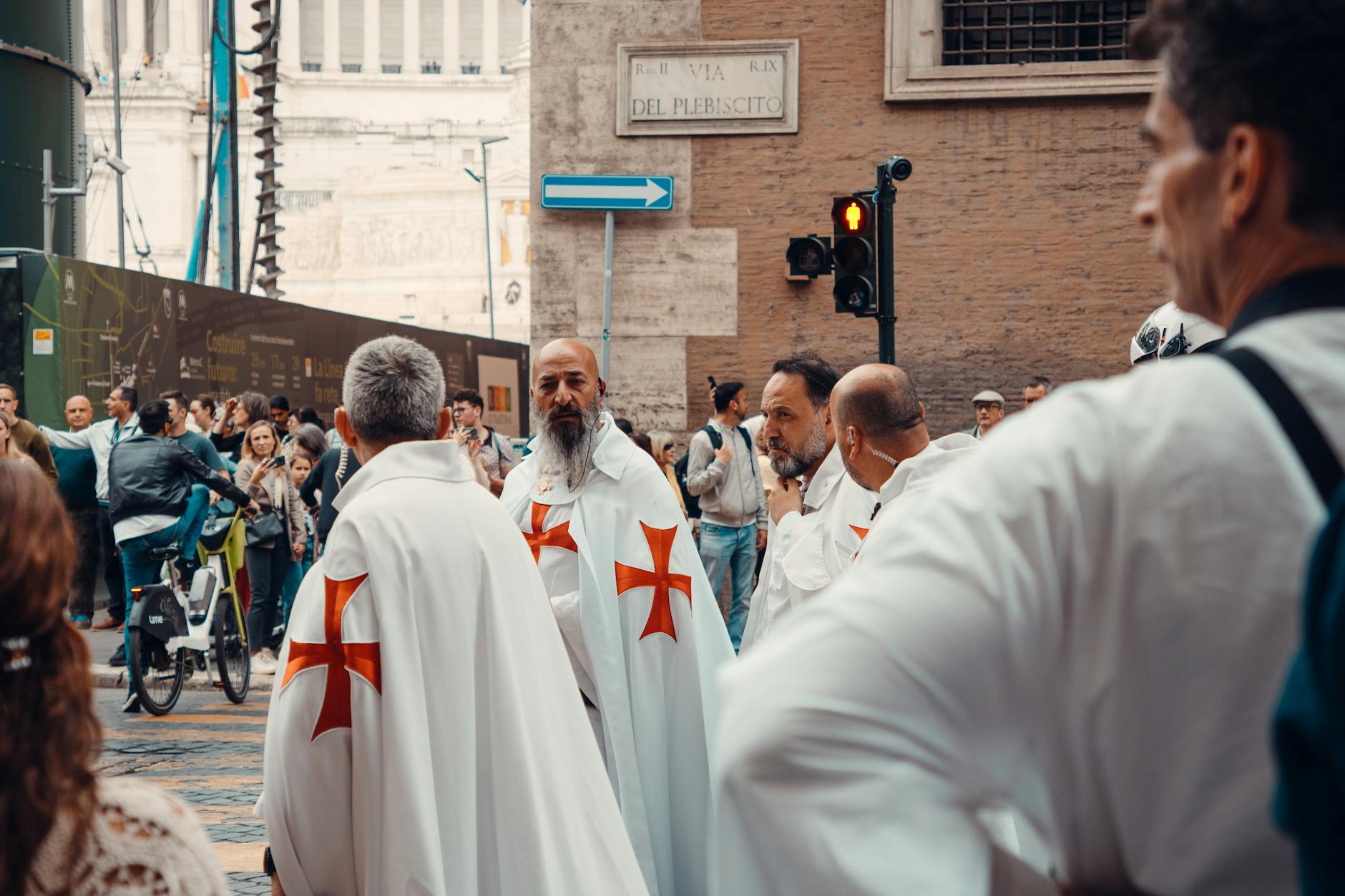The three vows: the foundation of a Templar’s life
Before a man could ever dream of donning the iconic white mantle adorned with the blood-red cross, he had to first strip himself of his former life. The Knights Templar were not merely a military force; they were a monastic order, and their strength was forged not just in the crucible of battle, but in the profound commitment of their sacred vows. These were not casual promises but the very pillars upon which the entire Order was built. The oath, sworn before God and his brothers, revolved around three core tenets: poverty, chastity, and obedience.

The vow of poverty is perhaps the most misunderstood. The Knights Templar as an organization became one of the wealthiest institutions in Christendom, acting as an early form of international bank. How could its members be sworn to poverty? The key was the distinction between individual and collective wealth. A man entering the Order surrendered all his personal property, land, and money. He owned nothing, not even the uniform on his back or the warhorse he rode. Everything belonged to the Order. This vow was a powerful tool for humility and unity. It eliminated personal greed and rivalry over possessions, ensuring that a knight’s focus remained on the collective mission, not personal enrichment. Their simple, unadorned surcoats and mantles were a direct reflection of this vow, a visual reminder that they were servants of a higher cause, not lords of their own fortune.
Next came the vow of chastity. In a medieval world where noble lineage and marriage alliances were paramount, this was a radical sacrifice. By forswearing all romantic and carnal relationships, a Templar dedicated himself entirely, body and soul, to God and the Order. This vow was believed to purify the warrior, making him a more worthy vessel for God’s will on the battlefield. It also served a practical purpose, eliminating the distractions of family life, inheritance disputes, and the political entanglements that came with marriage. A Templar’s only family was his brotherhood; his only loyalty was to his Master and his faith. This singular focus was essential for a man who could be deployed to the perilous frontiers of the Holy Land at a moment’s notice.
Finally, and most crucially for a military order, was the vow of obedience. A Templar knight swore absolute obedience to the Master of the Order and his superiors. In the rigid hierarchy of the Knights Templar, an order given was to be followed without question or delay. This discipline transformed a collection of fierce, independent noble warriors into a cohesive and devastatingly effective fighting unit. The Latin Rule, the code that governed the Templars, stated that a knight should “so completely renounce his own will that he should not even be able to go to the city or to his house… without the permission of the Master.” This was not the obedience of a servant, but the disciplined trust of a soldier who understood that unity and command structure were the keys to survival and victory. It was this unwavering obedience that allowed them to execute complex battlefield maneuvers and hold the line against overwhelming odds, solidifying their legendary reputation.
The secret initiation: entering the brotherhood
The ceremony for joining the Knights Templar was a solemn and clandestine affair, shrouded in a mystery that would later be used against them. It was not a public celebration but a deeply personal and spiritual transition, typically held at night within the secure, candle-lit confines of a Templar commandery chapel. The secrecy was not for sinister purposes, but to preserve the sanctity of the ritual and to test the true conviction of the aspirant.

A man could not simply decide to become a Templar. He had to be a free man of noble birth, in good health, and free from debt or other obligations, including marriage. The process began with the candidate making a formal request for admission. This was a test in itself. The presiding knight, often the Master or a high-ranking official, would not immediately accept. Instead, he would paint a grim picture of the life that awaited, warning the candidate of the immense hardships. He would speak of hard beds and simple food, of waking for prayers in the cold dark, of surrendering one’s will to another, and of the constant, looming threat of a violent death in a faraway land. This was a deliberate attempt to dissuade anyone with romantic or fleeting notions of glory. If the candidate’s resolve remained unshaken, he was asked to leave while the chapter of knights present discussed his suitability. He would be called back and warned again. Only after demonstrating his unwavering commitment through multiple requests was he deemed ready to proceed.
The core of the ceremony involved the aspirant kneeling before the chapter and being subjected to a series of questions to confirm his eligibility. Once satisfied, he would swear his sacred oath upon the Gospels, promising to uphold the vows of poverty, chastity, and obedience. He vowed to defend the Holy Land, protect Christian pilgrims, and adhere to the Latin Rule for the rest of his life. It was at this point that the most controversial elements, which would later surface in the infamous Templar Trials, allegedly took place. Accusations of being asked to deny Christ and spit upon the crucifix were used as primary evidence to dissolve the Order. Historians today are deeply divided on this. Some believe these were confessions extracted under torture, while others speculate they may have been a bizarre and misunderstood test of absolute obedience and humility, forcing a knight to prove he would follow an order no matter how personally abhorrent, trusting in the authority of the Order over his own conscience.
Whether these darker rituals were real or fabricated, the ceremony’s climax was undeniably powerful. The new brother was accepted with a fraternal kiss, a symbol of peace and fellowship. He was then formally robed in the Templar uniform. The simple tunic and, most importantly, the white mantle were placed upon his shoulders. This was more than just receiving a uniform; it was the bestowal of a new identity. The white symbolized the purity he was expected to maintain, and the red cross, added later by order of the Pope, symbolized his willingness to be a martyr for the faith. He was no longer a secular nobleman; he was a Knight of the Temple, a brother sworn for life.
Daily rituals and the code of conduct
The oath taken during the initiation ceremony was not a one-time declaration but a living commitment that shaped every moment of a Templar’s existence. Life within the Order was a relentless cycle of prayer, training, and communal duty, all governed by the strict set of regulations known as the Latin Rule. This detailed code was the blueprint for their brotherhood, turning abstract vows into concrete, daily actions that reinforced their unique identity as warrior-monks.

Their life was deeply spiritual. The Templars were expected to attend religious services throughout the day, from Matins before dawn to Vespers and Compline in the evening. Prayer was as much a part of their duty as sword practice. If a knight was on campaign and could not attend chapel, he was instructed to recite a certain number of Pater Nosters (Our Fathers) in its place. This constant religious observance served as a reminder that their fight was a holy one, and their strength came not just from their martial prowess but from their divine purpose. This fusion of piety and warfare was the very essence of the Templar ideal.
Communal living was another cornerstone of their brotherhood. Templars ate their meals together in a refectory, often in silence while one of the brothers read aloud from the scriptures. They slept in a communal dormitory, not in private chambers, with a lamp kept burning throughout the night to discourage misconduct and foster a sense of security and shared experience. These practices were designed to strip away individual vanity and privilege. In the dormitory or at the dining table, a powerful count was no different from a minor knight. This monastic lifestyle built an intense camaraderie and interdependence that proved invaluable on the battlefield. They lived, prayed, ate, and fought together, forging a bond that was often stronger than blood.
The Latin Rule governed everything else, from their dress to their conduct in battle. A knight could not have personal locks on his chests, could not receive letters without the Master’s permission, and was forbidden from engaging in popular noble pastimes like hunting with hawks. Their uniform was to be kept simple, devoid of fancy furs or pointed shoes. Even the care of their equipment was legislated; a knight’s squire was essential, but the knight himself was ultimately responsible for his warhorse and gear, reflecting the humility and duty of his station. The rules of combat were equally strict and were the source of their fearsome reputation. A Templar banner was never to be retreated from. A knight was forbidden from surrendering unless all Templar banners had fallen and the situation was utterly hopeless. This code, lived out daily, transformed them from individual soldiers into a unified, disciplined, and zealous brotherhood, where the oath was not just a memory of a secret ceremony, but the very air they breathed.







